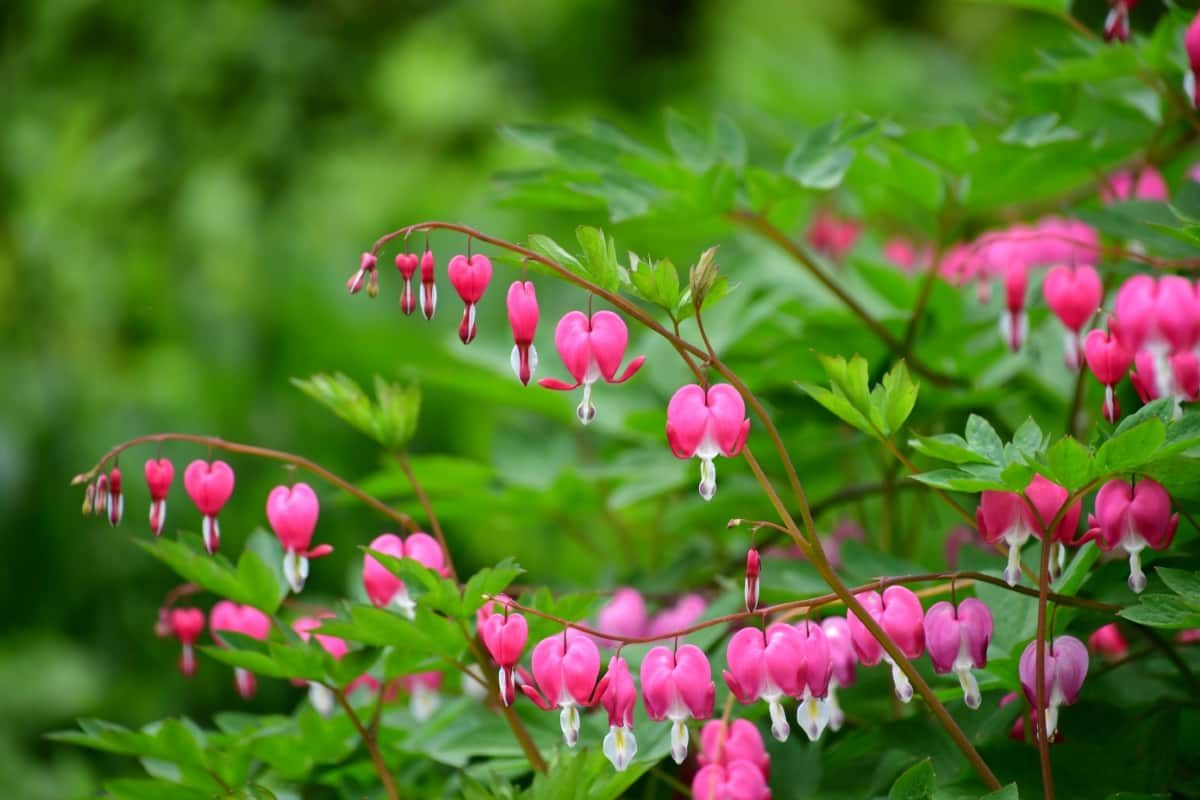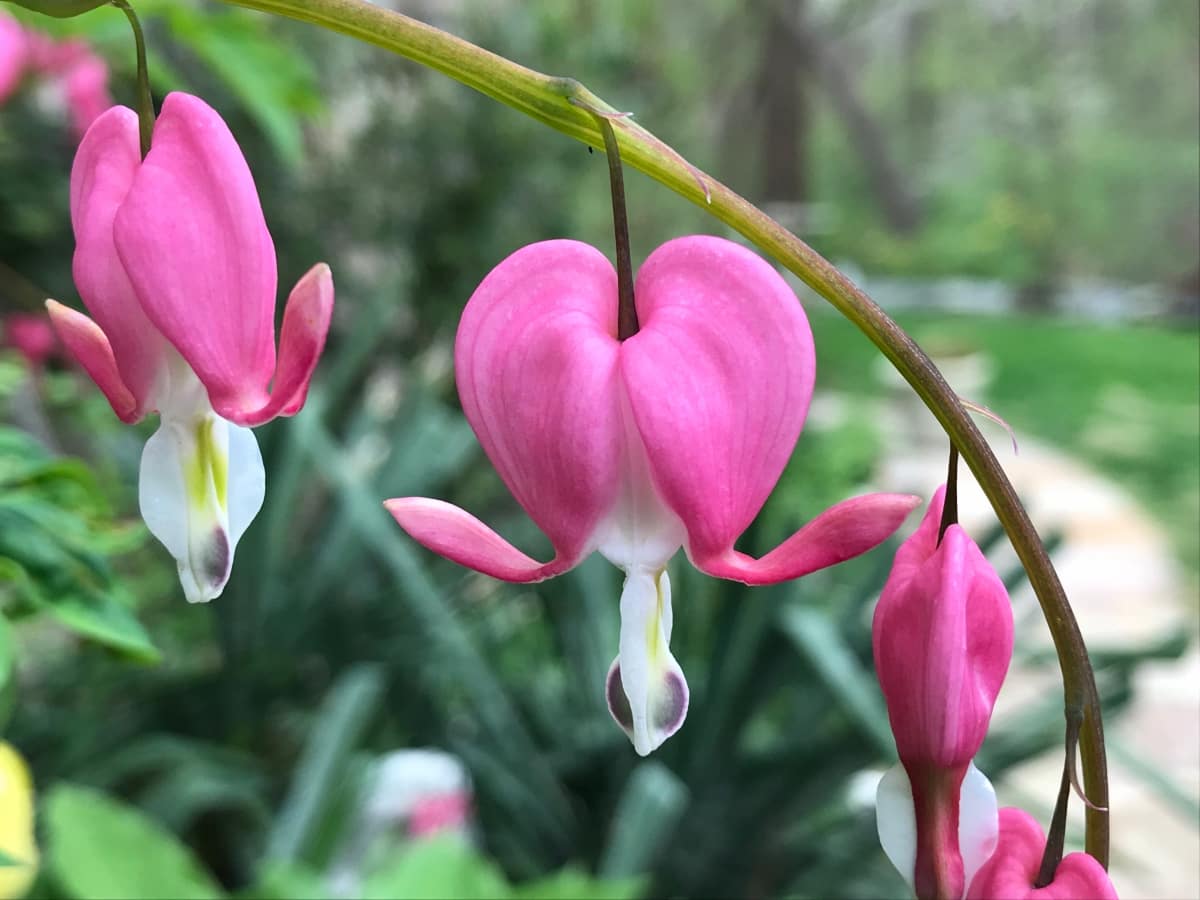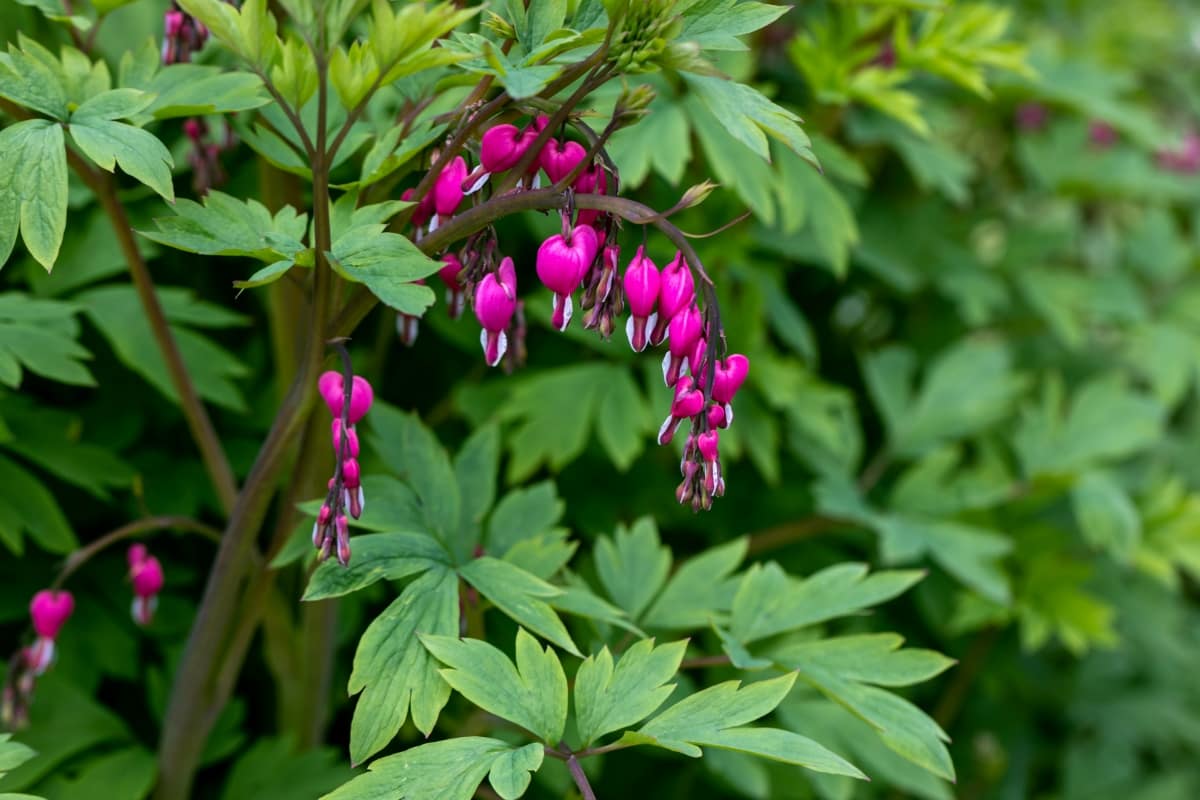Bleeding Heart is a beautiful perennial plant that produces gorgeous pink or white flowers in the spring. Its unique heart-shaped flowers, dangling from arching stems, make it an eye-catching addition to any garden.

How to Plant and Care for Bleeding Hearts
Best Soil Preparation Tips for Successful Bleeding Heart Planting
Preparing the soil for Bleeding Heart planting is crucial to ensure healthy growth and blooming. Bleeding Hearts prefer slightly acidic to neutral soil with a pH of 6.0 to 7.0. If the soil is too alkaline for growing Bleeding Heart, it can cause yellowing foliage and poor growth.
Understanding Sunlight Requirements for Thriving Bleeding Heart
- Bleeding Heart are known for their delicate, heart-shaped flowers that bloom in springtime. If you want your Bleeding Hearts to thrive, it’s important to understand their sunlight requirements. While some plants prefer full sun or shade, Bleeding Hearts fall somewhere in between – they require partial shade to thrive.
- If you’re planting your Bleeding Hearts in a garden bed, choose a spot with morning sun and afternoon shade. Alternatively, if you’re growing them in containers on a porch or patio, place them where they’ll receive filtered light throughout the day.
How to Plant Bleeding Heart in a Shaded Garden Spot
- Planting Bleeding Heart in a shaded garden spot is a perfect method to add a splash of color and beauty to any area that doesn’t receive direct sunlight. The first step when planting Bleeding Heart is selecting the right location, which should be an area with partial or full shade.
- Before planting, prepare the soil by digging up the bed about 12 inches deep and adding compost or organic matter to improve drainage. A well-draining soil mix helps prevent root rot from developing.
- When planting Bleeding Heart, loosen the roots without damaging them before placing them into the hole. Make sure you plant at least one inch deeper than its current depth, which will help with moisture retention during dry spells.
- It’s essential to space each plant at least two feet apart so they can grow comfortably and not compete for nutrients and sunlight. Afterward, thoroughly water your newly planted flowers but avoid overwatering the Bleeding Heart plant as it can cause root rot damage.
Step-By-Step Guide to Growing Bleeding Heart in Containers
- Firstly, choose a container at least 12 inches deep and wide enough for the Bleeding Heart root system. Ensure the selected container has drainage holes at the bottom to prevent waterlogging.
- Next, fill the container with well-draining soil mixed with compost or organic matter. Bleeding Hearts prefer slightly acidic soil with good moisture retention.
- Once you’ve filled the pot, dig a hole carefully as deep as the root ball of the Bleeding Heart plant. Carefully place your plant into this hole and backfill it with more soil mixture until it reaches just below where stems emerge from roots.
- Water thoroughly after planting and keep an eye on its moisture level – don’t let it dry out completely; avoid overwatering, which may cause soggy soil leading to rotting roots.
- Place your container in an area that receives partial shade during hot summer days but gets some morning sunlight too. Regularly check if your plants need watering by inserting fingers – if the soil is dry, then water; otherwise, hold off for another day or two before checking again.
Caring for Bleeding Heart
- Caring for Bleeding Heart is essential to keep them healthy and vibrant. One of the most important factors to consider is watering. These plants do not like wet feet, so it is crucial to ensure proper drainage in their planting area. During hot summer days, you may need to water your Bleeding Heart more often than usual.
- Fertilizing Bleeding Hearts with an organic option during early spring can also support their growth and flowering potential. However, avoid over-fertilization, as this could harm your plant.
- Bleeding Hearts are susceptible to pests such as aphids and diseases like powdery mildew. Keeping a close eye on these issues is vital, especially during their growing season when they’re vulnerable.
- Providing winter care for a Bleeding Heart involves cutting back its foliage after it dies back naturally in fall while mulching around the base of the plant using compost or leaves helps protect against extreme temperatures during winter months.
Watering Techniques for Healthy Growth of Bleeding Heart Plants
- Watering is an essential aspect of growing healthy Bleeding Heart plants. Overwatering the plant can cause root rot, while underwatering can lead to wilting and stunted plant growth.
- When watering your Bleeding Heart plant, make sure that you pour enough water until it comes out through the drainage holes at the bottom of its container or in-ground planting spot. This way, you’ll ensure that all parts of the roots receive adequate hydration.
Pruning Bleeding Heart for Enhanced Blooming and Shape
- Pruning the Bleeding Heart is an essential task that helps maintain the shape and improve blooming. The ideal time to prune these plants is when the foliage dies in late fall or early spring.
- The first step in pruning a Bleeding Heart is to remove all dead, damaged, or diseased stems and leaves. This will help prevent any potential disease from spreading and promote new growth for next season.
- Next, thinning out crowded areas by cutting back some older ground-level stems is important. This will allow more sunlight into the plant, promoting healthier growth.
In case you missed it: How to Grow and Care for Sago Palm: A Comprehensive Guide for Beginners

Fertilizing Bleeding Heart: Nutrient Needs and Organic Options
Fertilizing is an important part of caring for Bleeding Heart plants, as it helps provide the necessary nutrients for healthy growth and abundant flowers. While these plants do not require heavy fertilization, a little bit can go a long way in enhancing their beauty.
Bleeding Hearts prefer a balanced fertilizer that contains equal amounts of NPK. A 10-10-10 or 12-12-12 fertilizer applied once or twice during the growing season should suffice. Composting and mulching are excellent ways to add organic matter to the soil that will slowly release nutrients over time.
Common Pests and Diseases Affecting Bleeding Heart: Prevention and Treatment
- One of the most common pests affecting Bleeding Heart is aphids. These small insects cluster on the undersides of leaves, sucking sap from the plant and causing stunted growth. The best way to prevent aphid infestations is to keep your garden clean and debris-free.
- Another pest that commonly affects Bleeding Heart plants is slugs. To discourage slug activity around your plants, try placing copper tape or diatomaceous earth around their base.
- Bleeding Heart plants are also susceptible to fungal infections, such as powdery mildew and botrytis blight. These diseases cause a white or grayish powder-like substance on leaves, slowly killing them off if not treated promptly with fungicides.
- To avoid infection by these fungal pathogens, ensure proper air circulation around your plants by pruning off dead branches or crowded foliage.
Harvesting Bleeding Heart Seeds for Propagation: Expert Advice
- Wait for the plant’s flowers to dry completely before collecting the seed pods. Once dry, gently remove them from the stem and place them in a paper bag or envelope.
- Next, store your collected seed pods in a cool and dark place until you’re ready to plant them. Label each envelope with the harvest date and other relevant information, such as location or variety.
- When it’s time to sow your Bleeding Heart seeds, prepare a shallow container filled with moist soilless potting mix. Scatter the Bleeding Heart seeds on top of the soil and lightly press down so they make good contact with it.
- Cover your container with plastic wrap or put it inside a ziplock bag and place it somewhere warm but not too sunny until germination occurs. Keep watering regularly while waiting for sprouts.
Companion Planting with Bleeding Heart for a Vibrant Garden Display
Companion planting is an excellent way to add more colors and variety to your garden and attract beneficial insects. To create a vibrant garden display, you can plant Bleeding Hearts with other shade-loving plants such as Ferns, Hostas, Astilbes, and Columbines.
In case you missed it: How to Grow and Care for Butternut Squash: A Comprehensive Guide for Beginners

Conclusion
Growing Bleeding Heart in containers can be a great option for those with limited space or who want to add color to their patios, decks, and balconies. With proper care and attention, your Bleeding Heart can thrive for many years, providing stunning blooms every spring.
- Feed Your Flock for Less: Top 10 Tips to Save on Chicken Feed
- Ultimate Guide to Ossabaw Island Hog: Breeding, Raising, Diet, and Care
- Hatching Answers: The Top 10 Reasons Your Chickens Aren’t Laying Eggs
- Eggs and Economics: Breaking Down the Cost of Raising Backyard Chickens
- Defend Your Greens: Proven Methods to Keep Iguanas Out of Your Garden
- Ultimate Guide to Cinnamon Queen Chicken: A Comprehensive Guide for Beginners
- Ultimate Guide to California Tan Chicken: Breeding, Raising, Diet, Egg-Production and Care
- Ultimate Guide to Marsh Daisy Chicken: Breeding, Raising, Diet, and Care
- 10 Types of Chicken Farming Businesses You Can Start for Profits